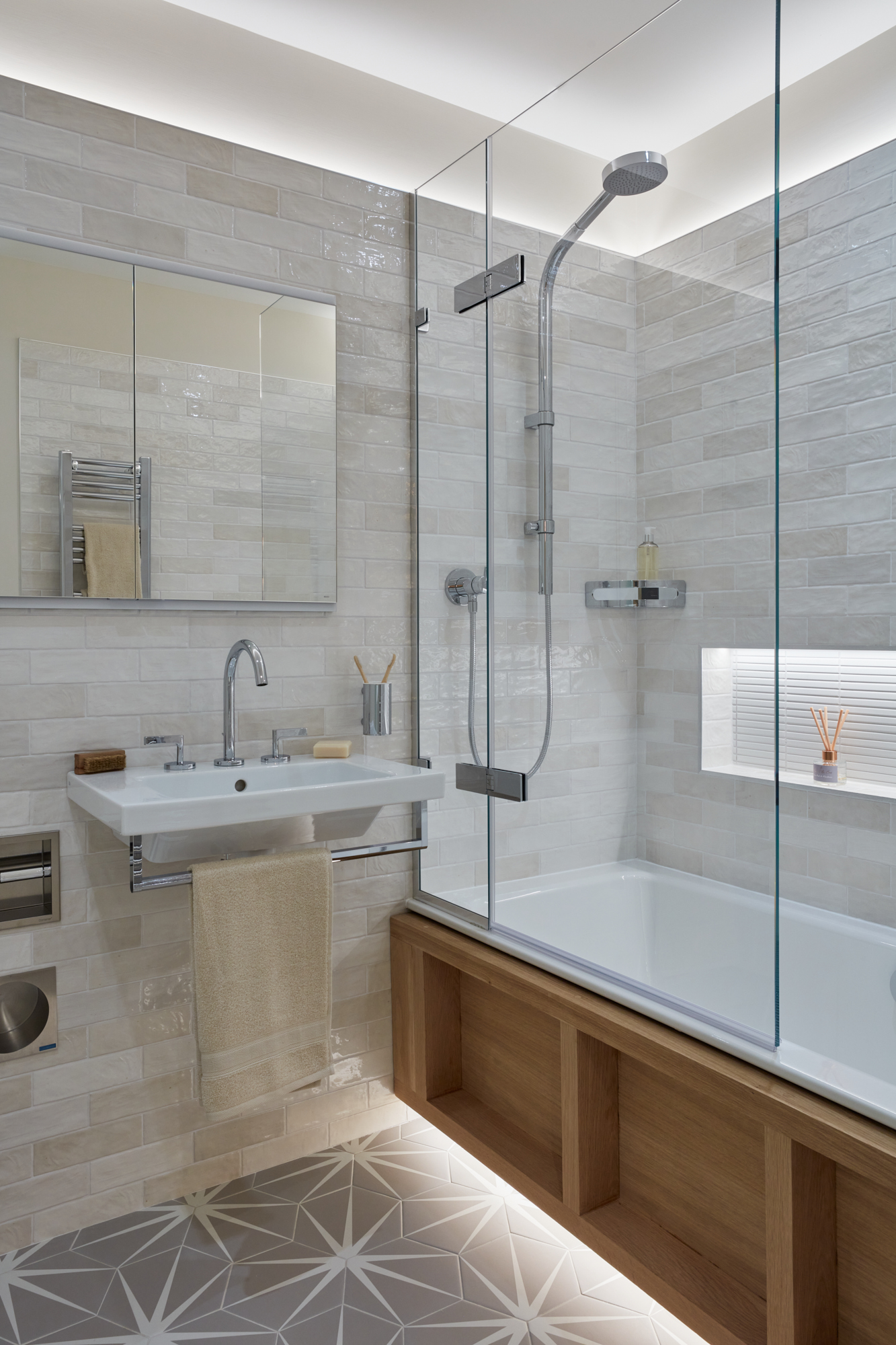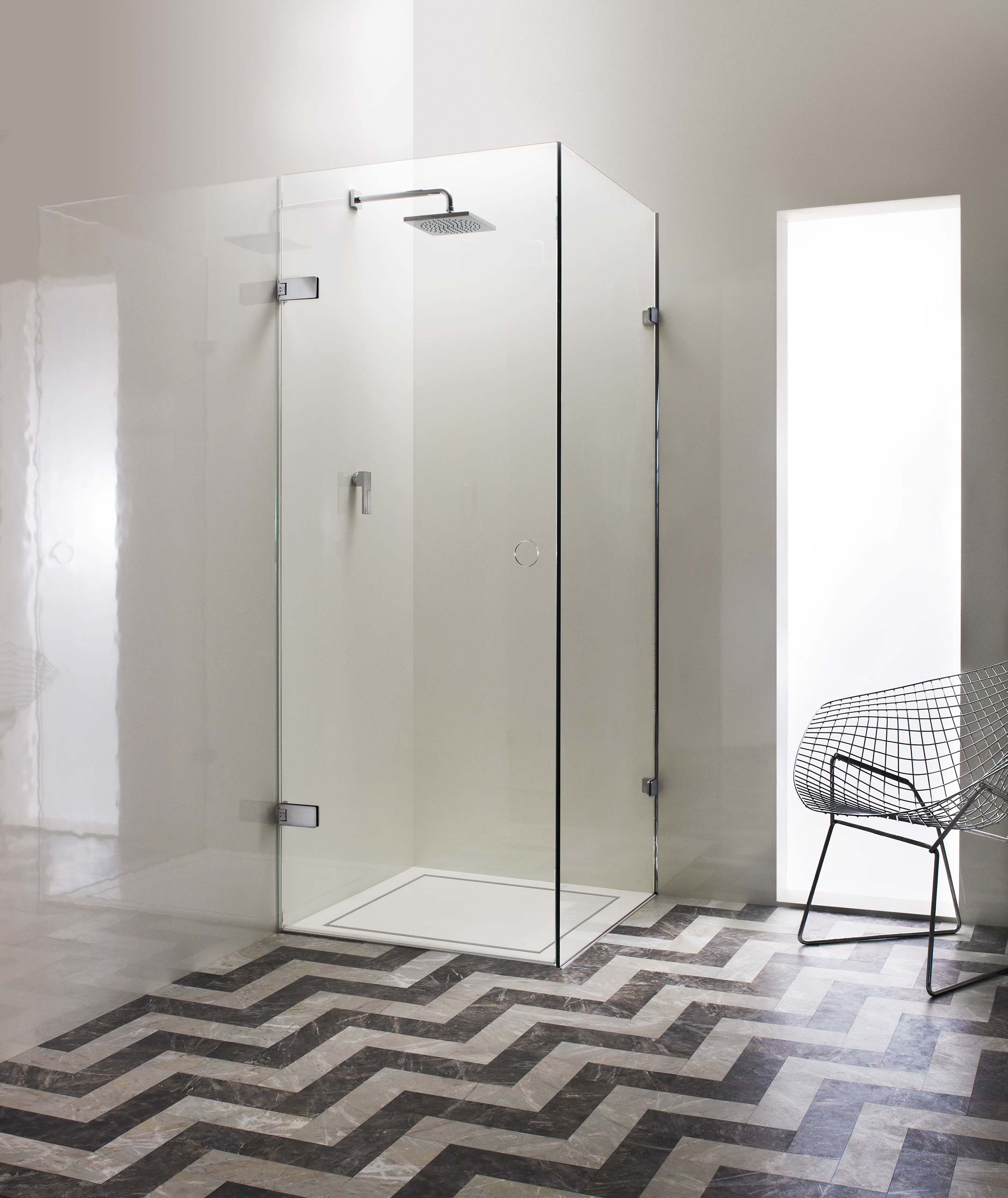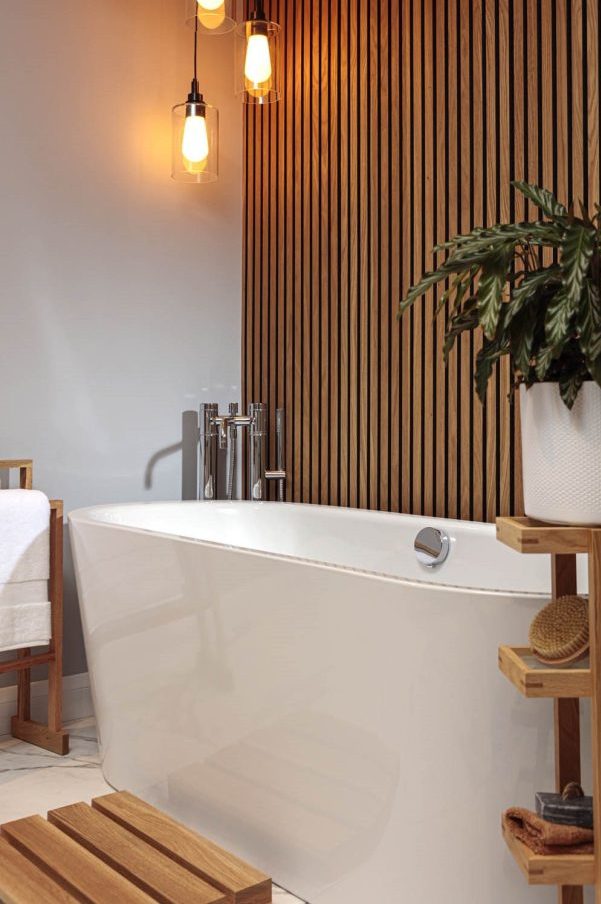
When it comes to shower room design, one of the most difficult decisions homeowners have to grapple with is whether to replace a bathtub with a shower. As bathrooms continue to evolve from purely functional spaces to personal retreats, the choice between soaking in a tub or enjoying a refreshing shower becomes increasingly significant.
Whether you’re looking to modernise an outdated bathroom, maximise limited space or simply update your home with fresh bathroom design ideas that reflect your lifestyle, this decision requires thoughtful consideration.

Before making any decisions, take a careful look at your current bathroom layout and any space constraints you might have. A typical bathtub requires approximately 55 cm on all sides. For standard bathtubs, we advise having a space of around 90 cm long and 75 cm wide free along the length of the tub. In smaller bathrooms, removing the tub might free up valuable space.
You also want to consider the condition of your existing fixtures as well. If your bathtub is showing significant wear or damage, replacing it becomes more justifiable than if it’s in excellent condition. Pay attention to your plumbing configuration too – shower installations typically work with existing bathtub plumbing, but some adjustments might be necessary depending on your desired shower features.
Your day-to-day habits and household composition should heavily influence your bathroom fixture choices. Families with young children often find bathtubs essential for bath time routines, while busy professionals might exclusively use showers for speed and efficiency. Consider whether anyone in your household enjoys regular relaxing soaks or uses bathing for therapeutic purposes.
Think about your long-term plans as well—if you’re renovating your forever home, a barrier-free shower might serve you better as you age, while if you’re decorating to sell, you’ll want to consider what appeals to the broadest range of potential buyers.
Converting your bathtub to a shower offers numerous advantages. The most immediate benefit is often the additional space it provides—showers typically have a smaller footprint, making your bathroom feel larger and more open. Modern showers can incorporate luxury features like rainfall showerheads, jets, steam options, and built-in seating that transform your daily routine into a spa-like experience.
From an accessibility standpoint, walk-in showers also eliminate the hazardous step over a tub wall, reducing fall risks for everyone in the household. Plus, there’s the maintenance – showers have fewer surfaces where soap scum and mildew can form, and since you can step inside to clean them, they’re easier to maintain. Showers typically use less water than filling a bathtub too, potentially lowering your utility bills while making an environmentally friendly choice.

Despite the advantages of showers, eliminating your bathtub comes with several potential drawbacks that are certainly worth considering. Perhaps the most significant concern is the impact on your home’s resale value—many estate agents advise maintaining at least one bathtub in your home, particularly in family-oriented neighbourhoods where parents of young children view tubs as essential.
From a practical standpoint, bathtubs serve multiple purposes beyond a relaxing soak—they’re useful for bathing pets, hand-washing delicate items, or dealing with household tasks that require a large basin.
For those struggling with the bath-versus-shower decision, several compromise options exist that combine the best of both worlds. A popular middle-ground solution is installing a high-quality shower-bath combination that features a soaking tub with an enlarged shower area and premium fixtures—giving you bathing flexibility without requiring additional space. For those with adequate bathroom square footage, creating a wet room that includes both a freestanding tub and a separate walk-in shower area for maximum versatility.
Space-saving soaking tubs with smaller footprints than traditional models can preserve the bathing option while still freeing up floor area. If your home has multiple bathrooms, consider maintaining at least one bathtub while converting others to efficient shower spaces—this strategy works particularly well when renovating a master bathroom while keeping a tub in a family or guest bathroom.

As you weigh up all these factors, several key questions can guide your final decision. First, honestly evaluate how often your bathtub is actually used for bathing rather than showering—many homeowners realise they’ve maintained a tub for years despite exclusively taking showers. Reflect on how long you plan to remain in your current home too. Longer timeframes may justify more personalised choices rather than prioritising resale considerations.
No matter what you decide, Village Bathrooms is on hand to help you design your perfect bathroom. Get in touch to book a showroom appointment today.